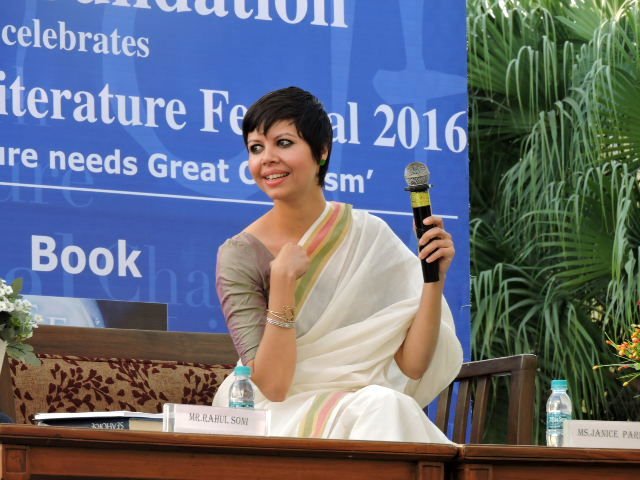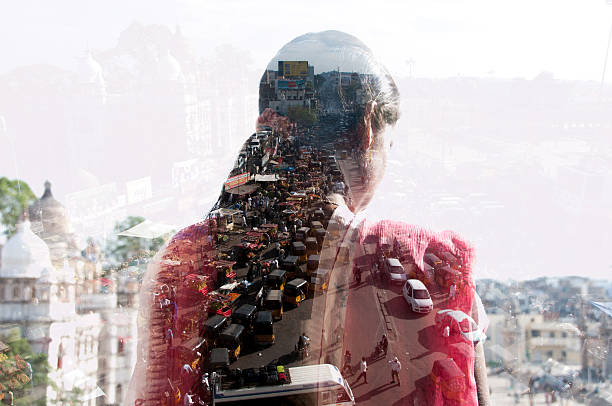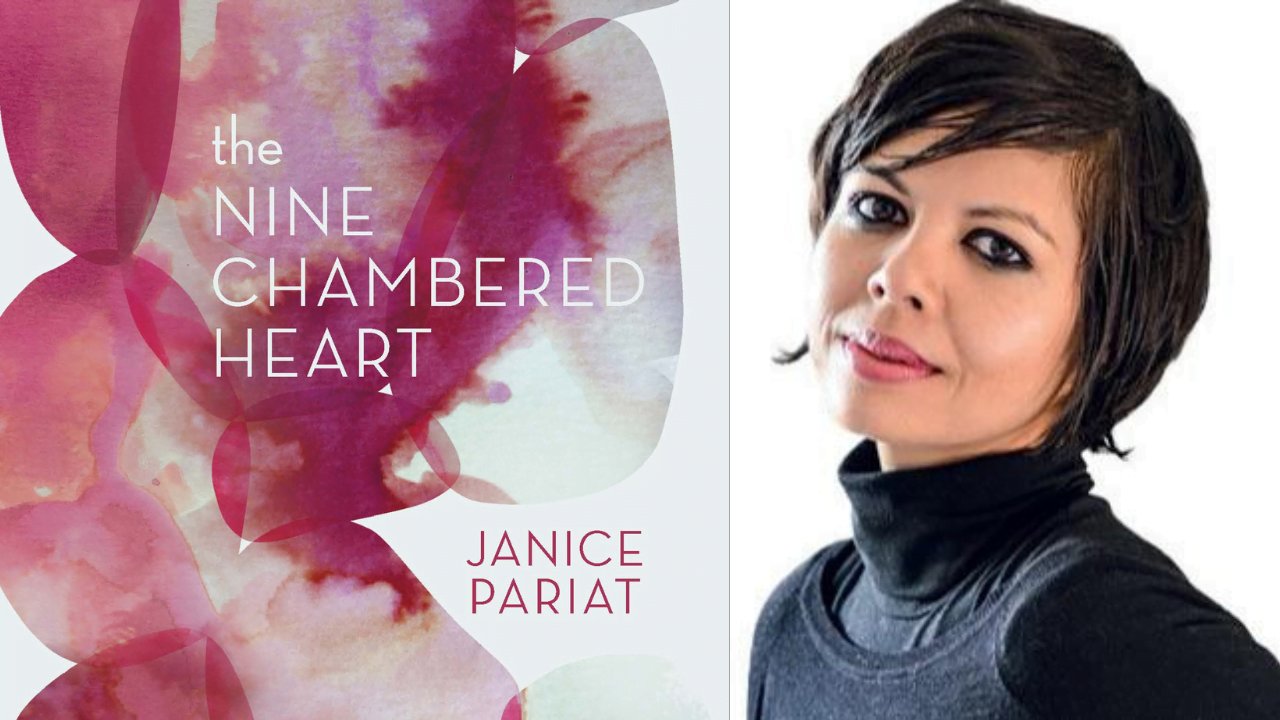As can be understood from the book’s title, The Nine-Chambered Heart (2017) by Janice Pariat is a story divided into nine—interlinked yet distinct—parts, all focusing on the same female protagonist. While one would expect the story to actually take them through her life in a continuous manner, the novel instead provides fragmented narratives from the perspectives of different characters, mostly male. All the narrators have been in love with the main character at varying points in her life and attempt to highlight different personality traits of hers while talking about the relationship they share with her.
The nine stories are set in nameless cities and have unnamed characters in them. However, if the reader is familiar with Pariat’s work, they would easily guess that ‘the city without a river‘ in the novel is New Delhi and ‘the city with a river‘; is London. This is because Pariat mostly bases her short stories and novels on these two cities—perhaps due to the fact that she spent her university days at Delhi University and the University of London. Of course, for someone reading her work for the first time, this creative choice might seem fascinating.

Another praiseworthy element in the novel is its employment of second-person narratives—all the narrators in it directly address the protagonist while introducing her to the readers. Pariat does this so beautifully that each person telling us a story seems to have a clear and distinguishable voice. Yet, the reader knows that their voices and perceptions about the main character can not be completely trusted because they are, after all, talking about a second person who might be entirely different from what the narrators are describing her as.
Also Read: Book Review: Representation Of Charulata As A Married Woman In Nashtanir
The second-person narratives further lead to the creation of numerous contrasting portrayals of the main character’s personality. In some stories, she comes across as a quiet and mysterious person while in others, she appears to stand out in crowded places due to her sensuality. Nonetheless, most of the stories either focus too much on the superficial aspects of her personality or simply reduce her to someone whose only identity marker is related to her sex appeal.
Some might argue that Pariat purposefully does that in order to make the male gaze in the stories clearer. However, even in stories that do not require the readers to actually view the protagonist through the male gaze, there is very little they can gather about her true persona.
A few examples of the aforementioned can be found in a story that is being told from the point of view of the protagonist’s female flatmate. Pariat, through this particular story, tries her best to include some form of queer representation in her book, but the theme of lesbianism still doesn’t come out the way heterosexuality does.

This segment is either extremely watered down or the author needs to have a better understanding of queer relationships. The same becomes evident in a conversation that the narrator of this part has with the protagonist which goes on as mentioned:
” ‘Do you have a boyfriend?’ I ask finally. ‘Girlfriend?’ I casually add. . .
‘Neither.’
‘But you wouldn’t mind either?’. . .
‘Not at all.’ But the tone of your voice is light and airy. You could be joking.”
As can be understood, the protagonist doesn’t confirm that she is queer but doesn’t deny the same either. The narrator, thus, ends up feeling confused about her response and tells the reader that she “could be joking“. This creates ambiguity about the protagonist’s sexuality which places this narrative in the category of queerbaiting. If the protagonist is queer, why are all her other relationships in the novel strictly heterosexual? If the protagonist is, in fact, heterosexual, why is this story, especially this conversation included among others?

Also Read: Book Review | New Intimacies, Old Desires: Law, Culture And Queer Politics In Neoliberal Times
It must also be noted that more than half of the stories in the novel are solely centred around the sexual relationships that the protagonist has with the male characters who talk about her. While it is important to have more conversations on the theme of female sexuality in order to destigmatise the same in a world where female fictional characters are hardly ever allowed to be sexual, especially in Indian contemporary fiction, the male narrators in The Nine Chambered Heart quite often view the protagonist as nothing more than a sexual being.
In a story titled, ‘The Crusader‘, the narrator draws the reader’s focus to the sexual attraction he feels towards the protagonist multiple times. His story ends soon after they engage in sexual activity. Thus, there is nothing to take away from this chapter apart from the descriptions of the sexual contact between the two.
Additionally, there is another part in the novel where the protagonist is eroticised, however, this time, by a schoolboy. While talking about her character, he says, “But I don’t feel in this strange way for you until I see you almost naked.” This is mentioned by the boy when he watches her leave the bathroom with nothing but a towel wrapped around her. Somehow, this part of the novel confuses one about whether or not the main character is being objectified. It is, perhaps, after this very scene that the schoolboy gets smitten by her to the point where he can not stop thinking about her.

Alongside the aforementioned examples, numerous other stories involve the narrators forming certain perceptions about the protagonist that are quite dissimilar to the ones mentioned in the stories prior to theirs. For instance, one of the narrators who meets her when is on a solo trip in a foreign land—in a city “filled with stone bridges“—ends his story by saying, “…it lends something to the space between us. You have filled it with hope. That is the terrible thing I see in your eyes. Hope.”
Also Read: Book Review: The Ethics Of Ambiguity By Simone De Beauvoir
This line, in a way, makes the reader wonder what the protagonist is truly like. In the initial few stories, she appears to be someone who is detached—something that one considers her to be even in the stories after this one. Yet, here, a man who has met her quite recently in the novel says that he sees hope in her eyes which none of the other characters seems to have seen so far.
As a novel, The Nine-Chambered Heart is magnificently written with brilliant imagery, symbolism and poetic lines mentioned throughout. The brilliance also lies in how each chapter can be read individually in addition to it significantly shaping the overall storyline. However, while the language used in the book is extremely elegant, the stories in it altogether create a perplexing image of the protagonist.
About the author(s)
Upasana is a master’s student at SOAS, University of London where she is pursuing a degree in South Asian Area Studies. She is an avid blogger and a film reviewer which means that she is currently struggling to balance her time between Netflix and her grad school commitments. When not reading, writing or binge-watching something, she can be found having deep conversations with her close friends or complete strangers about the most random things under the sun.






